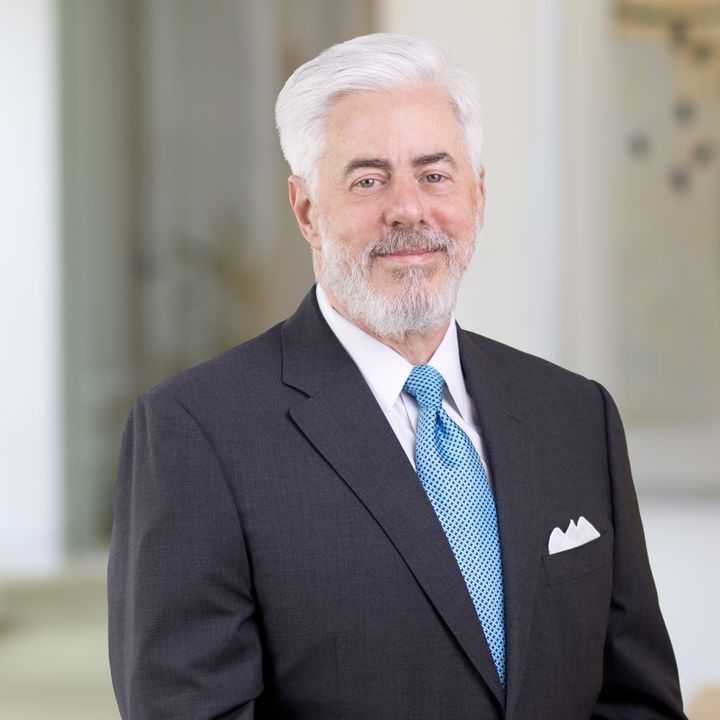NY Court of Appeals Reaffirms Plaintiffs’ Burden to Establish “Sufficient Exposure” to Prove Causation in Toxic Tort Cases
Client Alert | 4 min read | 05.05.22
Reaffirming its landmark decision in Parker v. Mobil Oil Corp.,[1] New York’s highest court last week overturned a $16.5 million jury verdict for the husband of a woman who had died from peritoneal mesothelioma allegedly caused by a decade of daily exposure to asbestos-contaminated talcum powder. [2] The ruling is the latest in a series by the Court of Appeals requiring toxic tort plaintiffs to prove exposure “to sufficient levels of the toxin to cause the illness.”[3] The Court used the case to reiterate that conclusory assertions of causation, or qualitative terms such as “excessive,” are insufficient to meet the Parker causation standard.
Plaintiff Nemeth alleged that the death of his wife Florence was caused by her use from the 1960s to the early 1970s of a commercial talcum powder, Desert Flower, contaminated with asbestos.[4] Ms. Nemeth had applied the product for about seven minutes each day in a small, unventilated bathroom.
Plaintiff presented the testimony of two experts. A geologist, Sean Fitzgerald, testified that he had performed a “glove box” test in a small enclosed chamber to simulate the potential exposure from using this talc product. He estimated that asbestos fibers were “significantly releasable” and that 2.7 million fibers were released into the chamber during his test. He concluded that Florence Nemeth would have been exposed to “thousands to millions of fibers, billions and trillions when you add it up through repeated use.”[5] Dr. Jacqueline Moline, an internist and frequent testifying expert in New York asbestos litigation, told the jury that peritoneal mesothelioma is a “signal tumor” that almost always is caused by asbestos exposure. While conceding that some exposures to asbestos may be trivial and do not increase the risk of mesothelioma, she opined, relying on Fitzgerald’s study, that Ms. Nemeth’s exposure would have been “at levels which multiple studies had shown elevated rates of mesothelioma.” [6]
The Court of Appeals, in a 5-1 decision, overturned the verdict. It held that the expert testimony failed to meet the Parker standard.[7] The Court found Dr. Moline’s testimony that “brief or low-level exposures of asbestos” could cause disease insufficient. Taking a hard look at the literature Dr. Moline cited in support of her opinions – an article by Dr. Laura Welch, “The Helsinki Criteria” (a set of criteria for diagnosis and attribution of asbestos-related diseases), and a single case study of peritoneal mesothelioma – the Court found that none “sets forth an estimate of the minimum level of exposure to respirable asbestos…that would suffice to cause peritoneal mesothelioma.”[8]
Neither was Fitzgerald’s exposure simulation an appropriate quantification of Ms. Nemeth’s exposure. He could not offer an estimate of the amount that she would have inhaled, nor could he demonstrate an exposure comparable to levels proven to cause peritoneal mesothelioma.[9] “While a precise numerical value is not required,” the Court said, echoing Parker, “Fitzgerald’s test simply failed to provide any scientific expression linking decedent’s actual exposure to asbestos to a level known to cause mesothelioma.”[10]
The opinion has several important takeaways:
- The Court once again forcefully established that Parker is the law of causation in toxic tort cases. Since Parker, the Court has repeatedly applied the requirement of sufficient exposure proof in cases involving mold, gasoline, and asbestos.[11]> Nevertheless, some New York trial and intermediate appellate courts have instead relied on a pre-Parker decision in Lustenring,[12] an “old asbestos” case that allowed plaintiffs to meet their burden merely by showing a large exposure to asbestos-containing dust.[13] In a footnote, the Court stated in no uncertain terms that “[a]ny reliance on the Appellate Division’s holding in Lustenring … to support [causation] is incorrect. Such an approach is incompatible with Parker and its progeny.”[14]
- Unlike some courts addressing the scientific basis of expert causation testimony,[15] the Court of Appeals declined to accept at face value the bases of the experts’ testimony when evaluating them under the Parker causation test. It reviewed the literature Dr. Moline cited and found no estimate of causative levels of exposure.[16] Similarly, the Court took a hard look at Fitzgerald’s methodology and found that it provided no scientific estimate of Ms. Nemeth’s exposure.
- The Court repeated that regulatory standards are no substitute for legal causation. It rejected plaintiff’s reliance on the OSHA Permissible Exposure Limit for asbestos “to fill this gap in proof as to the level of exposure sufficient to cause peritoneal mesothelioma.”[17]
- Acknowledging that quantifying exposure is sometimes “difficult,” the Court emphasized that the Parker standard is not “impossible” for plaintiffs to meet. Indeed, the Court noted Dr. Moline’s admission that industrial hygienists could have estimated Ms. Nemeth’s inhalation of asbestos fibers. It added that plaintiff also could have introduced evidence of levels known to cause peritoneal mesothelioma, but did not do so. “The fault here,” said the Court, “is not in our standard, but in plaintiff’s proof.”[18]
In the 16 years since Parker, New York trial and appellate courts have had a remarkably tough time applying the principles of Parker in toxic tort cases, and particularly in asbestos cases. Nemeth should represent an unequivocal cap on the debate over what expert testimony is sufficient to support causation. In New York, expert testimony on causation must make a meaningful scientific assessment of the dose of exposure and a comparison to levels shown in the scientific literature to cause the plaintiff’s disease.
[1]Parker v. Mobil Oil Corp., 7 N.Y.3d 434 (2006). Plaintiff in Parker, a former gas station attendant, alleged that exposure to benzene in gasoline caused him to develop acute myelogenous leukemia. His experts testified that he was “frequently” exposed to “excessive” amounts of gasoline, and had “far more exposure to benzene than did the refinery workers in the epidemiological studies,” but did not quantify his exposure to benzene. Affirming the Appellate Division’s exclusion of plaintiff’s expert testimony and dismissal of the complaint, the Court of Appeals held that plaintiff’s expert testimony “cannot be characterized as a scientific expression of Parker’s exposure level.” Crowell & Moring co-authored an amicus brief in Parker on behalf of the Coalition for Litigation Justice, Inc. in the Court of Appeals.
[2] Nemeth v. Brenntag N. Am., --- N.E.3d ---, 2022 WL 1217464 (NY Apr. 26, 2022).
[3] Parker, 7 N.Y.3d at 448
[4]Nemeth, 2022 WL 1217464 at *1.
[5]Id.
[6]Id at *2.
[7] Crowell & Moring authored an amicus brief in support of the appellant in Nemeth on behalf of The Chamber of Commerce of the United States of America and The Coalition for Litigation Justice, Inc.
[8]Nemeth, 2022 WL 1217464 at *4.
[9] Id. at *5.
[10] Id.
[11] Matter of New York City Asbestos Litig. [Juni], 116 N.E.3d 75 (NY 2018), Sean R. v. BMW of N. Am., LLC, 48 N.E.3d 937 (NY 2016); Cornell v. 360 W. 51st St. Realty, LLC, 9 N.E.3d 884 (NY 2014).
[11]Lustenring v. AC & S, Inc., 13 A.D.3d 69 (1st Dep’t 2004), lv. denied (2005)
[13] See, e.g., Battistoni v. AERCO Intl., 2016 N.Y. Misc. LEXIS 4775; 2016 NY Slip Op. 32552(U) (Sup. Ct. N.Y. Cnty. Dec. 21, 2016) (Moulton, J.) (following Lustenring and “visible asbestos dust” and distinguishing Parker); Miller v. BMW of North America, 154 A.D.3d 441 (1st Dep’t 2017) (short opinion affirming verdict based on “asbestos-laden dust” created by brake grinder, citing to Sean R. and Juni but without analysis); Robaey v. Air & Liquid Systems Corp., 186 A.D.3d 401 (1st Dep’t 2020) (relying heavily on Lustenring to distinguish Parker and Juni)
[14] Nemeth, 2022 WL 1217464 at *3 fn 3.
[15] William Anderson and Kieran Tuckley, How Much Is Enough? A Judicial Roadmap to Low Dose Causation Testimony in Asbestos and Tort Litigation. 42 Am. J. Trial Advoc. 39, 98-107 (2018). See, e.g., Scapa Dryer Fabrics, Inc. v. Knight, 770 S.E.2d 334, 340-345 (Ga. App. 2015); Neureuther v. Atlas Copco Compressors, LLC, No. 13-cv-1327-SMYSCW, 2015 WL 4978448, at *3-4 (S.D. Ill. Aug. 20, 2015); Davis v. Honeywell Int’l Inc., No. B256793, 2016 WL825586, at *9-10 (Cal. App. Mar. 3, 2016); Buttitta v. Allied Signal, Inc., No. L-9592-02, 2010 WL 1427273 (N.J. Super. Ct. App. Div. Apr. 5, 2010); Rost v. Ford Motor Co., Nos. 404 EDA 2012, 642 EDA 2012, 2014WL 2178528, at *10 (Pa. Super. Ct. May 19, 2014).
[16] Nemeth, 2022 WL 1217464 at *4.
[17] Id.
[18] Id. at *5.
Contacts
Insights
Client Alert | 14 min read | 12.22.25
European Commission Proposes Biotech Act to Boost Health Biotechnology in the EU
On December 16, 2025, the European Commission published its proposal for a regulation establishing a European Biotech Act to strengthen the EU's biotechnology and biomanufacturing sectors with a primary focus on health.
Client Alert | 11 min read | 12.22.25
European Commission Proposes Simplifying the Rules on EU Medical and In-Vitro Diagnostic Devices
Client Alert | 3 min read | 12.22.25
Second Circuit Expands District Court Review of Magistrate Judge Report and Recommendations
Client Alert | 2 min read | 12.19.25





